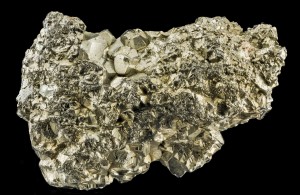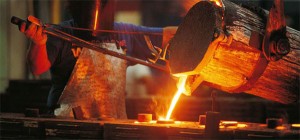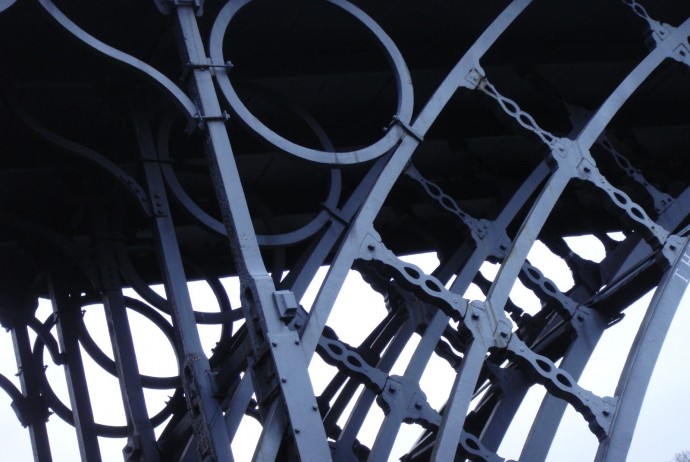Iron
By: Rachel Fish
The iron industry was revolutionary because it played a key role in the development of other industries. Iron was used, as the base ingredient, to make and improve many of the machines utilized in other industries.
What is iron?

Fool’s Gold
by Unknown, used under 
“Iron is the fourth most common metal in the earth’s crust. It makes up 5% of its weight. Iron occurs naturally in a variety of ores in sedimentary rock” (Burchill 2013). Some of the rocks that iron can be found in are iron pyrites (AKA fool’s gold), heamatite, ironstone, magnetite, and “bog ore” which is either limonite or goetite. In the beginning Iron was scarce but with demand growing, pioneers in the iron industry found new ways to make it cheaper and more readily available.
The Beginning of Iron

by Unknown, used under 
Iron was discovered over 5000 years ago. Charcoal was used in the making of iron until, because of high demand and short supply, charcoal became more scarce. “Iron was made by smelting iron ore or heating the ore to its melting point. The liquid iron was then cast into ingots, called pigs” (Burchill 2013).
The Changes of the Industry

Iron Melting Pot
by Unknown, used under 
Iron was vital to the industrial revolution because of its high demand in other industries. A few examples of goods that utilized iron in their productions were water pipes, machine frames, and rails. Such a demand forced miners to dig deeper into the earth for coal, which was needed to melt and cast iron. During the industrial revolution the whole industry started to become much more efficient. One of the pioneers in the industry was Abraham Darby I who was able to turn coal into coke (fuel). Abraham kept his process a secret until his grandson perfected the method and shared it with the world. The change from charcoal to coke (fuel) lowered the cost of production. The method developed by Darby still imposed limitations: it was still very expensive and hard to make. However, in 1783 Henry Cort discovered a new way to produce iron. “His “pudding furnace” produced molten iron that could be rolled straight away, while it was still soft, into rails for railways, pipes, or even sheet iron for shipbuilding” (Burchill 2013).
Other Important People
Benjamin Huntsman made steel in small quantities. He was a 36 year old clockmaker who did not discover steel. What he did discover, was a different way to produce steel. “Huntsman made steel by putting molten iron into earthware crucibles and then heating it, while excluding air at the same time” (Burchill 2013) which occurred in the 1740s. Huntsman was one of the first to produce it in small quantities.
Mathew Boulton
Mathew Boulton was one of the first to set up an iron factory, for high quantity production and distribution. His factory was very large but not situated close to forests as other factories who used wood to fire their furnaces. The factory made iron into useful objects for the common people such as buckles and bolts.
Sir Henry Bessemer
A well-educated man by the name of Henry Bessemer invented a “basic oxygen converter” which was used to change pig iron into steel. Henry Bessemer was from England so his converter was made use of, exclusively, more or less, by the British. British iron ore also had a slightly different chemical makeup which set it apart from the phosphoric ores that were in the rest of Europe.
Mathew Boulton and Sir Henry Bessemer were revolutionary because they made iron cheaper and more readily available throughout industrialized Europe and the Americas.
Citations:
Burchill, S. (2013). Iron and Steel Manufacture. Retrieved March 28, 2014, from The Open Door Web Site: http://www.saburchill.com/history/chapters/IR/037f.html
English Online. (n.d.). Industrial Revolution. Retrieved April 12, 2014, from English Online: http://www.english-online.at/history/industrial-revolution/industrial-revolution-manufacturing.htm
